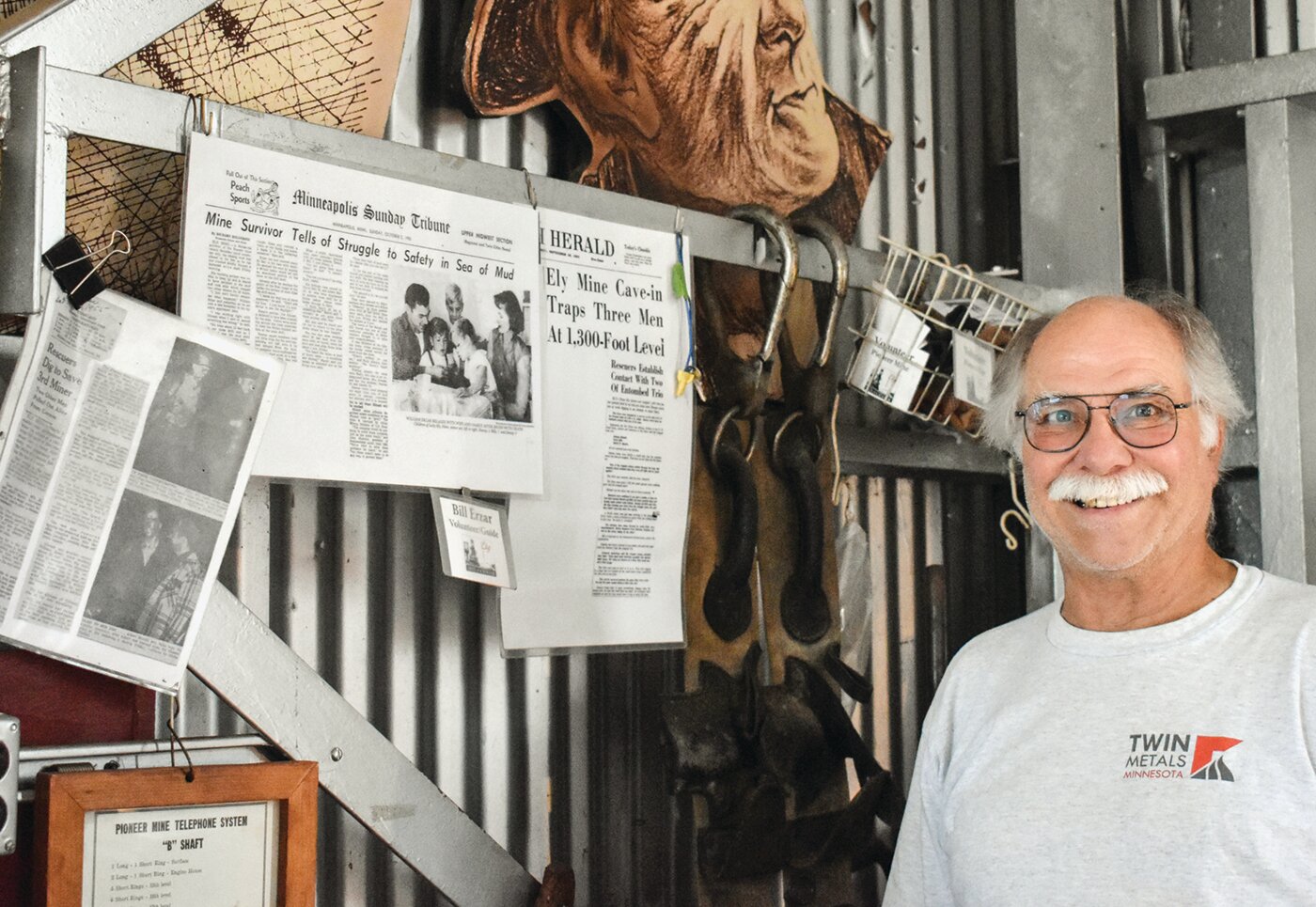Support the Timberjay by making a donation.
Ely’s biggest tourist bargain
ELY- The Ely Arts and Heritage Center (EAHC) on Pioneer Road is home to several popular area endeavors like the Greenstone Summer Art Camp for youth, many of Ely’s art shows, and the gathering …
This item is available in full to subscribers.
Attention subscribers
To continue reading, you will need to either log in to your subscriber account, below, or purchase a new subscription.
Please log in to continue |
Ely’s biggest tourist bargain
ELY- The Ely Arts and Heritage Center (EAHC) on Pioneer Road is home to several popular area endeavors like the Greenstone Summer Art Camp for youth, many of Ely’s art shows, and the gathering and starting area for many running and biking events. It’s also home to perhaps the area’s best tourist bargain: the museum that EAHC maintains in the shaft house, or headworks building, for the “A” shaft of the defunct Pioneer Mine.
The museum is free and the short tour of the shaft house and its collection of mining and historical Ely artifacts takes about a half hour. It is open on Tuesdays, 2-5 p.m., and Fridays, 3-6 p.m., from Memorial Day to Labor Day every year. What’s not advertised is that the museum is also open whenever Seraphine Rolando decided to open it up at other times instead of kicking his heels at home, or as fellow museum volunteer Bill Erzar commented, “whenever his wife gets tired of him around the house.”
The Timberjay was not able to verify why Rolando opens the museum above and beyond its advertised hours of operation. Regardless, it is a fact that Rolando puts in many extra hours at the Pioneer Mine every summer. It is easy to tell if the museum is open outside its regular hours. If Rolando’s signature military-surplus jeep, complete with machine-gun mount, is parked along the entrance to the museum’s driveway, Rolando has it open to the public and is giving tours.
Rolando, Erzar, and their colleagues volunteer their time to act as guides at the Pioneer Mine Museum, which opened to the public 13 years ago. The mine was the last operating mine in Ely. It operated for almost eight decades, closing in 1967. Many of the volunteers and visitors to the museum had family members who worked in Ely’s mines. Rolando’s grandfather worked at the Pioneer Mine, as did Erzar’s father. Erzar’s tour talk included the tale of his father’s harrowing escape from the 1955 drift collapse which killed three workers, one of whom was his father’s working partner.
The museum tours are an education, especially for those who aren’t Ely old-timers. “The reason Ely exists is because of these mines,” Rolando points out in almost every tour and talk he gives at the museum. One of the most interesting parts of the tour narration deals with how Ely’s iron mines created Miners Lake, not by water infilling of an open pit mine, but by the ongoing subsidence of collapsing underground mine shafts, drifts and stopes.
The photos at the museum of the area now covered by Miners Lake are jaw-droppers because they show dry ground covered by vegetation and trees as late as the 1960s. The subsiding ground became a lake when the Pioneer Mine shut down and stopped pumping hundreds of thousands of gallons a day to dewater the workings. Today, Miners Lake is one of local go-to places to fish for rainbow trout.
People traveling Pioneer Road may have noticed the newly-poured concrete slab out in front of the mine’s shaft house. The slab will form the foundation of the Ely Miners’ Memorial. Laurentian Monument Granite and Stone of Virginia is carving two granite plaques with the names of miners who lost their lives in Ely’s iron mines. The top of the memorial will be capped with headworks sheave wheel.
According to Ely clerk-treasurer Harold Langowski, the budget for the memorial is $60,000. “The city is contributing $15,000. Another $15,000 is from the Iron Range Resources and Rehabilitation Board. “The rest is from fundraising,” Langowski said. The memorial is scheduled to be completed by next summer.






